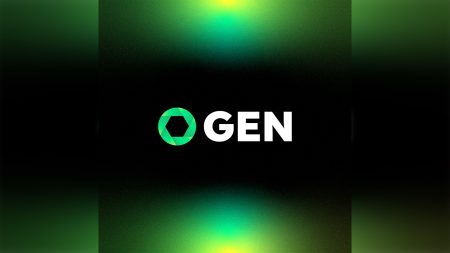- Mastercard, Polygon Labs, and Mercuryo revealed that the Mastercard Crypto Credential is now expanding to self-custody wallets.
- Mastercard turned to Polygon to underpin Crypto Credential, leveraging the Proof-of-Stake chain’s efficient settlement and low transaction costs.
Mastercard is expanding its Crypto Credential system to support self-custody wallets, with Polygon becoming the first blockchain network to enable verified, human-readable aliases.
Through this expansion, Mastercard Crypto Credential standardizes blockchain address verification by replacing long, complex wallet addresses with simple, username-style identifiers that are tied to verified individuals.
According to the press release, Mercuryo, a fintech company that helps bridge the crypto world and the traditional (fiat) financial system, enables these human-readable aliases to make crypto transfers more intuitive.
This also helps in reducing common errors caused by copying and pasting long addresses and introduces an added layer of identity assurance to decentralized wallet interactions.
Rather than relying on raw hexadecimal wallet addresses, users can share their Mastercard Crypto Credential “username” to receive funds, which simplifies the experience and reduces the risk of mistakenly sending crypto to the wrong address.
From Custodial to Self-Custody Wallets
Raj Dhamodharan, executive vice president, Blockchain & Digital Assets at Mastercard, said:
By streamlining wallet addresses and adding meaningful verification, Mastercard Crypto Credential is building trust in digital token transfers.
Bringing Mercuryo and Polygon’s specialized expertise together with our infrastructure is making digital assets more accessible and reinforces Mastercard’s commitment to driving secure, intuitive, and scalable blockchain experiences for millions of users globally,
Until now, Mastercard Crypto Credential has been primarily focused on custodial or exchange wallets. With the new expansion and the partnership with Polygon Labs and Mercuryo, Mastercard will now bring the credential framework into self-custody wallets.
The rollout works in several steps. First, onboarding and verification are handled by Mercuryo, a crypto payment API firm, which manages user registration and identity verification (KYC). Once verified, users receive a unique alias or username linked to their identity.
Next, linking to wallets allows users to connect this alias to their self-custody wallet address, like their private key, controlled wallet, enabling them to receive crypto without sharing raw addresses.
Finally, there is an optional soulbound token feature: users can request a non-transferable token on Polygon that exists on-chain and signals that the wallet belongs to a verified Crypto Credential user. This provides senders with additional assurance that they are transferring funds to a legitimate and verified address.
Why Polygon?
Mastercard selected Polygon as the underlying infrastructure for its Crypto Credential system to ensure that it operates with the reliability, speed, and scalability expected of a global payments network. Polygon’s Proof-of-Stake (PoS) blockchain provides fast transaction settlement times, enabling near-instant confirmation of crypto transfers.
Throughout the year, Polygon has implemented upgrades that have increased its network productivity. One improvement is the Heimdall v2 upgrade, which replaced the old consensus engine with CometBFT + Cosmos-SDK v0.50. This reduced transaction finality from approximately 1–2 minutes to 5 seconds.
Following Heimdall v2, the Rio upgrade was activated on the Polygon PoS mainnet around October, introducing a “payments-first” redesign. Rio implements one-block finality through a new block production mechanism, effectively eliminating the practical risk of chain reorganizations.
Polygon’s co-founder and CEO, Sandeep Nailwal, confirmed that the network moved from 200 to 2,000 transactions per second (TPS) with Rio, and expects to reach 5,000 TPS in the coming months, with a longer-term goal of 100,000 TPS.
Recommended for you:
Credit: Source link






